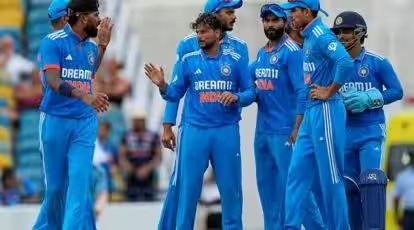This series might cause irritation to Indian fans. Five T20s against West Indies is not something that goes with everything else in the countdown to the 50-over World Cup, to be staged in the country in October-November.
A futile exercise, with no bearing on the future, is the common refrain, and some of it is justified. However far-fetched it may seem at this moment though, in some ways, these matches mark the beginning of India’s preparations for next year’s T20 World Cup in the West Indies and the USA. There are indications that some ‘cultural’ changes are contemplated.
There is no point in talking about possible team composition because the competition is next June. A lot might change in 10 months, including the entire team management. Trusted resources may become redundant, and those on the fringes may burst on to the scene.
But trying out new players is not the only objective for India at the moment. After being thrashed by England in last year’s T20 World Cup semi-final, the selectors and team management seem to have introspected and come up with fresh ideas. Virat Kohli, Rohit Sharma and KL Rahul were not part of the side in the six T20s India have played since.
Also Read: Cameos are Not Enough, Samson Must do Better
Even if not entirely because of him, under Hardik Pandya’s captaincy, it looked as if an effort was made to change the way the team played T20s. One shortcoming in the World Cup was batting conventionally in the first six overs, content with 30-odd and preserving wickets.
Acceleration happened towards the end, but the total on the board worked only against mediocre teams. Around 160-170 was never going to be adequate on true Australian pitches against title contenders. After the World Cup, India paid attention to this and scored at 8.92 per over in six games. Six is not big enough a sample size to draw a conclusion, but the hints were there that this bunch wants to start afresh.
Meaningless otherwise, these T20s against the West Indies and three more against Ireland will give India the chance to get accustomed to their new philosophy and approach. If it starts now, the probability is high that this will become a habit in the next 10 months. Essentially, these games are a stage to plant the seeds of the fruit they can enjoy later.
There is lots of young blood and fresh energy. Yashasvi Jaiswal, Tilak Varma, Ravi Bishnoi and Avesh Khan are either uncapped or have played only a handful of games. Performances now may not matter when it comes to June 2024, but they will not be forgotten. More importantly, it’s an opportunity to understand their roles and know what the team wants from them.
And however pointless it may appear, it is India’s last chance to test themselves in these conditions before the T20 World Cup. The fourth and fifth games are in Lauderhill in Florida, giving them a chance to see how the new strategy will work in the US. Amid misgivings and uncertainty over return on investment, an important phase in India’s T20 journey starts in Trinidad and Tobago.
Also Read: Unfair trials add to woes after Iyer injury





